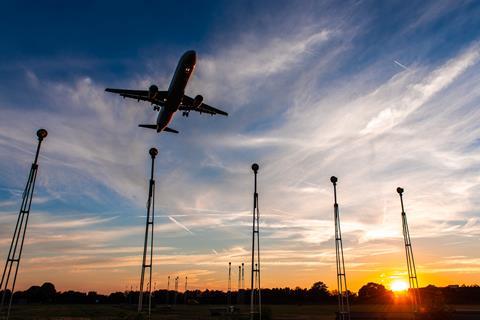Consulting firm Bain & Company questions commercial aviation’s ability to reach “net zero” carbon emissions by 2050.
It estimates that better engines, improved aircraft efficiency, and the use of sustainable aviation fuel (SAF) will help airlines reduce “up to 70%” of emissions by 2050, according to a new brief.

Other advanced technologies, namely hydrogen and batteries, will not mature fast enough to help much with the 2050 goal. Moreover, early hydrogen and full-electric aircraft “will face significant economic and technological obstacles”, it says.
The net-zero goal is also challenged by air travel growth that exceeds gross domestic product growth. By 2026, Bain foresees airlines raising ticket prices to fund their transition to net-zero – which could hurt demand.
“As air traffic continues to grow, airlines are under increasing pressure to reduce emissions in service of their 2050 net-zero goals,” says Jim Harris of Bain’s Aerospace, Defense & Government Services practice.
“Unfortunately, many of the technologies the industry needs to decarbonise are unlikely to be operating at scale by 2050. Leading airlines will develop a strategy to secure an affordable supply of sustainable aviation fuel, mitigate the rise in operating costs, and manage the impacts of declining demand as a result of higher prices.”
As for SAF, Bain estimates that even in 2050 it will be “two to four times” more expensive than ordinary jet fuel. This will combine with high maintenance fees to increase airlines’ overall costs by up to 18% by 2050.
It also questions the value of carbon offsets and observes the questions that surround offset accounting methods.
Bain, forecasting a “disruptive decade ahead”, feels that airlines can take several steps to prepare for more challenging times on the emissions front. These include securing a supply of SAF, focusing on fleet renewal with a mind for decarbonisation, and making efforts to mitigate rising operating costs. On the cost front, it suggests increasing cabin density, adjusting fleet use and seat count, and reviewing networks.


























